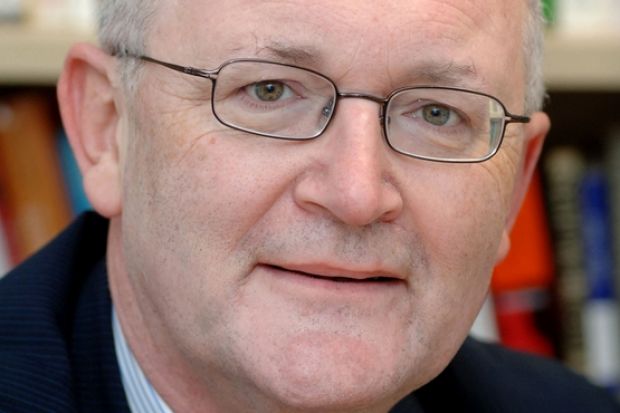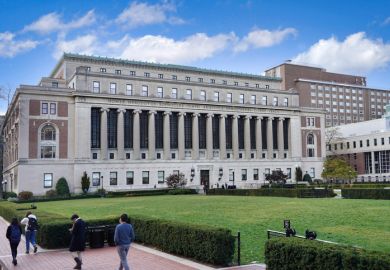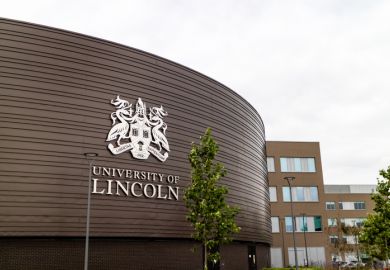Stay-at-home students who attend a local university should be eligible for cut-price tuition fees of £5,000 a year, according to an influential commission of higher education experts.
Under the proposals, those taking the new £5,000 a year “fee-only degree” would not be eligible for maintenance grants and loans, meaning the government could save up to £10,000 per student.
This would enable “low cost expansion” of the sector, according to the Commission on the Future of Higher Education, set up by the Institute for Public Policy Research thinktank.
Higher education is expected to suffer a major funding cut in next month’s spending review, and the commission, which includes university leaders from the UK and abroad, has warned that without reform, these funding reductions could continue after the next general election.
It has also estimated that the total value of student loans that will go unpaid is 40 per cent of the total value of loans. The government first predicted that it would be 30 per cent but, amid concerns that this was an underestimate, raised this to 34 per cent.
“Higher education has to play its part and find its fair share of deficit reduction but we should not let the work universities and colleges do in driving economic prosperity be swept away by an avalanche of austerity,” said Nigel Thrift, chair of the IPPR and vice-chancellor of the University of Warwick.
“The only way we will be able to afford to expand the number of students is if we offer a new type of degree. The current funding system privileges full-time residential courses supported by student loans, but this is not appropriate for many potential students, who want to study vocational courses in their local area, live at home and combine their studies with paid employment.”
In addition to cheaper degrees, the commission recommends allowing the number of 18- to 21-year-olds going to university to fall over the next seven years in line with a natural decline in the numbers of 18-year-olds in the population. This could lead to savings of up to £3.5 billion, it says, while holding the “teaching grant” flat in cash terms would save a further £104 million.
Other recommendations include keeping the maximum tuition fee at £9,000 and not increasing it in line with inflation until 2017-18, and continuing to ringfence the science and research budget.
The commission also argues that the government should stop making changes to the system for overseas students because the insecurity this generates is damaging to the UK’s reputation. It adds that international students should be removed from the government’s net migration target, and that post-study work opportunities should be “brought into line with our international competitors”. This would allow universities to raise more of their own funds from overseas students’ fees, it concludes.
All the findings are to be published in a report on 10 June.
Alternative funding models
Elsewhere in its report, the commission models five options for changing the way higher education is funded, and assesses how each option compares to the current system.
- Raising the top rate of interest on student loans to 4.5 per cent would bring the estimated non-repayment on student loans down to 33 per cent, and reduce the long term cost of the loan system to the government by £679 million.
- Lowering the maximum tuition fee to £6,000, while increasing direct government support for university teaching would require the government to invest an additional £637 million in university teaching over the long term. It would reduce the long term risk of the funding system, as a greater share of the government’s contribution would be upfront. In the short term however it would require £1.67 billion in revenue from other sources to compensate universities upfront for lost fee income.
- Lowering tuition fees to £6,000 could be cost neutral to the Treasury if the top rate of interest on student loans is raised to 4.6 per cent, or if the threshold at which graduates start to repay their loans is lowered to £17,120. Although fiscally neutral in the long term in the short term this option would also require £1.67 billion revenues to be raised from elsewhere to compensate universities for lost fee income.
- By funding tuition through a mixture of student loans and means-tested family contributions, the government could ask more affluent families to take out lower student loans, and pay some of their tuition cost through an upfront fee instead. This would relieve some pressure on the student loan system and could save the government £486 million in the long term.
- A graduate tax that maintains the current level of resource flowing to universities would need to be set at an additional 1.96 per cent on all taxable income above £10,000 for a period of forty years.
Register to continue
Why register?
- Registration is free and only takes a moment
- Once registered, you can read 3 articles a month
- Sign up for our newsletter
Subscribe
Or subscribe for unlimited access to:
- Unlimited access to news, views, insights & reviews
- Digital editions
- Digital access to THE’s university and college rankings analysis
Already registered or a current subscriber? Login




